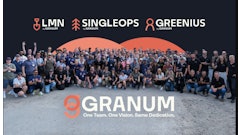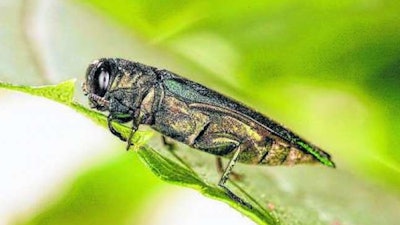
A variety of insecticide products and application methods are available to professionals for control of the emerald ash borer (EAB).
To address some of the considerations, University of Wisconsin Entomology professors R. Chris Williamson and P.J. Liesch have put together a guide for treatment considerations for EAB by professionals.
Since the presence and infestation level of EAB is quite difficult to determine at early stages of an infestation, insecticide treatments may be merited to mitigate damage by EAB. However, not all ash trees should be treated as some may be too extensively compromised or in poor condition to receive treatment.
Due to the expense of yearly insecticide treatments, one should consider the value of a particular ash tree in relation to insecticide treatment costs before making any treatments.
In addition, consider the health of each tree before treating. Research suggests that insecticide treatments are significantly more effective on EAB-infested ash trees with less than 50% canopy thinning. Insecticide treatments are not suggested for trees with greater than 50% canopy thinning.
Ash trees with greater than 50% canopy thinning should be removed and destroyed in accordance with established state and federal guidelines. For additional information on this topic, see University of Wisconsin Garden Pest Alert XHT1215, Is My Ash Tree Worth Treating for Emerald Ash Borer.
Insecticide treatment options
Insecticide products that are available for use by professionals, with information on appropriate application methods and application timings, are summarized in.
These products include:
• Ace-Jet (acephate)
• ACECAP Systemic Insecticide Tree Implants (acephate)
• Alpine (bifenthrin)
• ArborMectin (emamectin benzoate)
• AzaGuard (azidirachtin)
• Boxer Insecticide-Miticide (emamectin benzoate)
• Brandt enTREE EB (emamectin benzoate)
• Dinocide, Dinocide HP (dinotefuran)
• IMA-jet, IMA-jet 10 (imidacloprid)
• Imicide, Imicide HP (imidacloprid)
• Inject-A-Cide B (bidrin)
• Merit 2F, Merit 75 WP, Merit 75 WSP (imidacloprid)
• Onyx, OnyxPro (bifenthrin)
• Pointer (imidacloprid)
• Safari (dinotefuran)
• Tempo (cyfluthrin)
• Transtect (dinotefuran)
• Tree-äge, Tree-äge G4 (emamectin benzoate)
• Treeazin (azadirachtin)
• TreeMec Inject (emamectin benzoate)
• Xytect 2F, Xytect 75 WSP, Xytect 10% infusible (imidacloprid)
University research indicates that soil drenches or injections of imidacloprid provide excellent EAB protection for small ash trees [less than six inches diameter at breast height (DBH)] in the first year following treatment. Larger trees may require two consecutive years of treatment before they are effectively protected. Thus, treatment of large trees should begin before the trees become infested. While spring and/or fall applications are allowed on certain product labels, recent university research has indicated that spring applications have been more effective at controlling EAB and protecting canopy health. Most insecticide treatments must be repeated each year.
Products containing emamectin benzoate are labeled to provide two years of protection. Recent university research suggests that some of these products may provide more than three years of control with a single application when used at the highest labeled rate.
Trunk injections and implants require physically drilling or coring into a tree during the application of the insecticide. Thus, use of these application methods has the potential to cause injury to trees (especially smaller trees), and may provide entry points for certain disease-causing fungi [e.g., Nectria, the cause of Nectria canker.
Neither the University of Wisconsin nor Green Industry Pros endorses any one specific commercially available insecticide. Products discussed here have been evaluated in a variety of university research tests on EAB (www.emeraldashborer.info/). No matter which insecticide you use, always read and follow all label instructions. Avoid skin contact with insecticides and safely store insecticides out of the reach of children.


![Doosan Bobcat Wacker Neuson Stack 2ec Js Pb V6e[1]](https://img.greenindustrypros.com/mindful/acbm/workspaces/default/uploads/2025/12/doosan-bobcat-wacker-neuson-stack2ecjspbv6e1.CPyyz8ubHn.png?auto=format%2Ccompress&bg=fff&fill-color=fff&fit=fill&h=100&q=70&w=100)


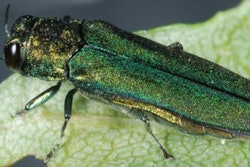
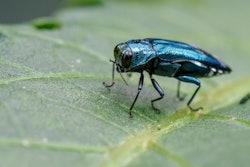

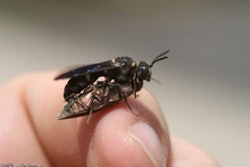


![Doosan Bobcat Wacker Neuson Stack 2ec Js Pb V6e[1]](https://img.greenindustrypros.com/mindful/acbm/workspaces/default/uploads/2025/12/doosan-bobcat-wacker-neuson-stack2ecjspbv6e1.CPyyz8ubHn.png?ar=16%3A9&auto=format%2Ccompress&bg=fff&fill-color=fff&fit=fill&h=135&q=70&w=240)






